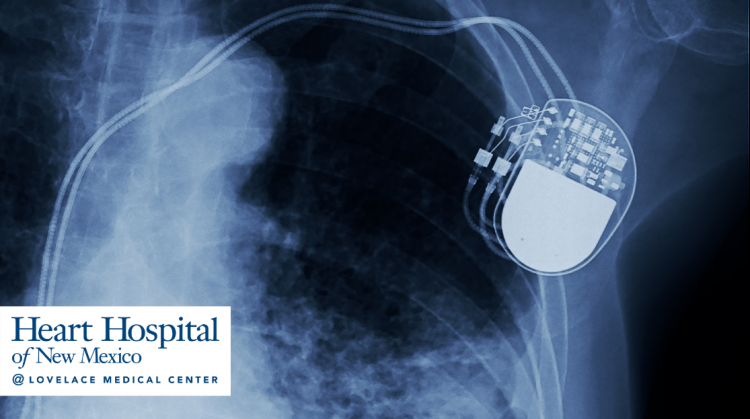
While working in his home office in November 2021, Jim M. began to feel lightheaded. Alone, Jim gently lowered himself to the floor, knowing a fall was imminent. Moments later, he began to realize the lightheaded, dizzy feeling wasn’t going to subside.
Fortunately, Jim made the decision to call an ambulance, and Albuquerque EMTs arrived 10 minutes later. Jim was able to put up the dogs and greet the EMTs at the door, to their surprise.
After performing an EKG, the EMTs let Jim know he was in VTAC (ventricular tachycardia), a type of abnormal heart rhythm; which caused Jim’s heart rate to spike to 200 beats per minute (bpm). A normal heart rate for adults is anywhere from 60 to 100 bpm.
“I’ve since understood that because my electrical was firing so quickly and chaotically, there just wasn’t enough oxygen going to the rest of my body,” he said. “My symptoms were lighted-headedness, a bit of a front-neck pain, a slight cold sweat and a little shortness of breath.”
Jim was transported to the Heart Hospital of New Mexico at Lovelace Medical Center.
“I was greeted by about a dozen clinicians with very concerned faces,” he said. “This ED Team, led by New Mexico Heart Institute’s Dr. Raymond Yau, tried two IV chemical interventions, but the tachycardia was unshakable. We moved to the cath lab for a cardioversion. It’s basically getting jolted by 200 joules to ‘reset’ normal sinus rhythm. It feels like someone hitting you with a baseball bat in the chest while you’re awake, but it worked.”
In addition to the cardioversion, Jim was told he’d need an ablation. Jim was informed electrophysiologist, Dr. Sean Mazer would head up the operation, and that gave him comfort.
“As Dr. Mazer left my room [before the surgery], I said ‘At least I’ll have the best,’” he said. “Humbly, in his dry-as-Albuquerque humor, Dr. Mazer replied, ‘At least you’ll have someone who knows what he’s doing.’ I laughed and appreciated his quiet confidence.”
The ablation was successful in taming Jim’s miscreant heart cells, but he need an additional operation to sustain. Jim received an ICD/pacemaker combo, implanted by Dr. Michael Hoskins.
After intervention from the Heart Hospital of New Mexico, Jim’s health is back on the right track, but it’s his stay at the hospital and the experience he endured that has stuck with him.
“I want my experience to serve as a friendly warning,” he said. “I’ve been a volunteer with the American Heart Association for 19 years. It’s an organization filled with amazing individuals, but you may not know them. My advice is to listen to your body. Ladies, know your unique heart signs and symptoms which can be found on Go Red for Women. Guys, drop your pride and make a life-saving call to 911, especially if you’re by yourself. You have a purpose for being here.”
In a post to his Facebook account after the ordeal, Jim expressed his gratitude to all the EMTs, doctors, nurses, hospital housekeepers and techs, as well as his case manager, his family and his wife, Jenn.
If you or a loved one are having symptoms, don’t wait. Call 911 and ask to be taken to Heart Hospital of NM at Lovelace Medical Center.
This testimonial has been adapted from a Facebook post originally shared on November 14, 2021.



